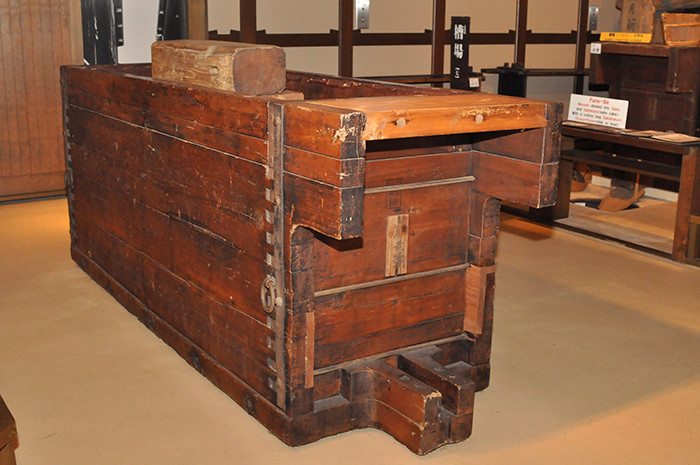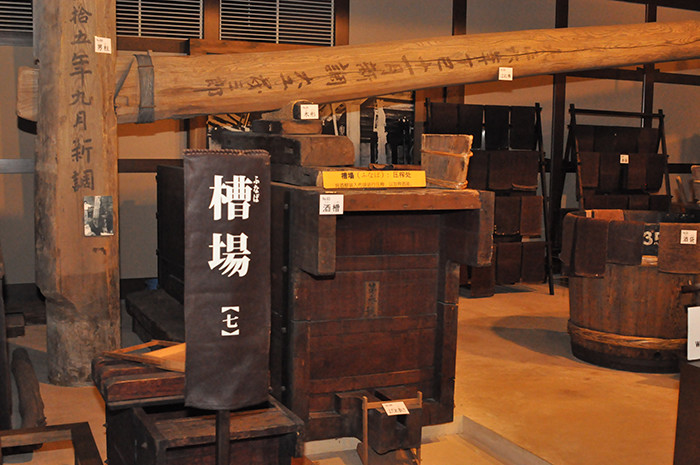Sakabune・fune
- 【English】
- Sake press (“boat”)
- 【Japanese】
- 酒槽・槽
The traditional kind of press, used by applying pressure to long bags full of moromi stacked inside the wooden vat. (The character 槽 indicates a vat or tub. Such presses are similar in shape to a boat, which is written with a different character 舟, but the reading fune is borrowed to apply to 槽 in this sake context.)
Originally, fune presses were all wooden, but now reinforced concrete, stainless-steel- or epoxy resin-lined equipment is common. Dimensions for width and depth are largely standardized (width, 70-73cm; depth, 90-100cm) but length can vary by batch size from between 200 to 360cm.
As the bags are stacked higher and higher in the press, sake trickles out naturally. After four-to-six hours, when the level of the bags has subsided somewhat, the application of pressure begins. Overnight, the pace of sake yield decreases, and it becomes impossible to press certain areas of the batch any further. The bags are re-stacked, and pressed for a further day at higher pressures. The press used at the first stage is called age-bune, and that used for re-stacking and afterwards, seme-bune. The sake from the seme-bune is rather lower in quality, and represents about five percent of the whole.

sakabune1

sakabune2

